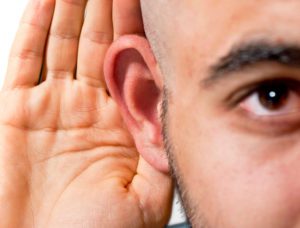How you can become a better listener?
How you can become a better listener?
Listening is often something that we take for granted. It is common that people often hear what is being said but hearing is very different to listening. To listen, we need to make an effort not to just hear what people are saying but to take it in, digest it and completely understand what is being said.
Listening is important in enhancing your ability to understand better and make you a better communicator. There are many techniques that can be used to become a better listener.
Active listening
is the technique of careful listening and the observation of non-verbal cues, with feedback in the form of accurate paraphrasing. It is generally used in counselling, training, and solving disputes or conflicts.
The listener will pay attention, understand, respond and remember what is being said in the context of intonation, timing, and non-verbal cues also known as body language.
This is very different to other listening techniques like reflective listening and empathic listening.
Reflective listening is a communication strategy to seek and understand a speaker’s idea, then offering the idea back to the speaker, to confirm the idea has been understood correctly.
Empathic listening is giving people an outlet for their emotions before being able to be more open, sharing experiences and being able to accept new perspectives on troubled topics that cause emotional suffering.
Why is active listening important?
Active listening involves the listener observing the speaker’s non-verbal behaviour and understanding and reading their body language. The listener observes non-verbal behaviours through the following –
- The interpretation of body motion communication such as facial expressions and gestures, nonverbal behaviour related to movement of any part of the body or the body as a whole.
- Paralinguistics, the study of the tone of words also known as vocalics These aspects of language include the higher volume used in conversation, the use of silence, hesitations or pauses, rate of speech, inflections, and expressiveness
- Proxemics, the study of physical distance and posture between speakers. The four zones include the intimate zone (physical contact to 18 inches). Personal space (between 1 and 4 feet). Social space (between 4 to 12 feet) and finally public distance (typically 12 feet and above).
Active listening involves many active listening techniques.
Here are a few examples:
- Paying attention – set a comfortable tone that gives the person an opportunity to think and speak. Allow “wait time” before responding.
- Withholding judgment – the ability to have an open mind and be open to new ideas
- Reflecting – the active listening technique that indicates that you and your counterpart are on the same page.
- Clarifying – Don’t be shy to ask questions about any issue that’s ambiguous or unclear when engaging in active listening.
- Summarising – summarise what you have understood while practicing active listening and also asking the other person to do the same.
- Sharing – talk about a similar experience you had or share an idea that was triggered by a comment made previously in the conversation.
Having the ability to interpret a person’s body language with the use of active listening, will help the listener develop a more accurate understanding of the speaker’s message by earning the trust of others and helping you to fully understand the person’s situation.
You can download our free guide below

